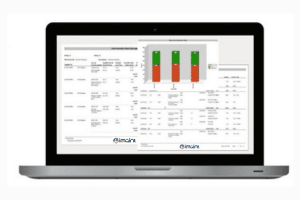Maintenance workflow is the step-by-step process that gets initiated by some trigger event to the point where the action is closed out. For example, in a typical maintenance operation, a trigger event could be a report of faulty equipment. The step-by-step workflow process would include the generation of a maintenance order, the planning of the task, the execution of the repair and the reporting at the end of the job. Every organization has a workflow process whether it is officially documented or not; there is always a standard way to get things done. When this process is not well-defined, it can lead to frustrations on the part of employees trying to get their job done as well as major inefficiencies that are costly to the organization over time. In comes maintenance management software.
CMMS Software Improves Maintenance Workflow
With the advent of CMMS software and the continuous improvement in workflow aided by these systems, substantial advancements have been made in managing maintenance workflow processes and the automation of standard tasks.
Four Main Stages in the Maintenance Process
Stage 1: Initiation Phase
The maintenance process begins with the initiation phase, where a maintenance event is triggered. This can occur when a fault is reported or during a scheduled preventive maintenance check. Condition monitoring may also detect issues like increased vibration, triggering a maintenance activity. A CMMS system allows these events to be triggered automatically or by an authorized user.
Stage 2: Planning the Maintenance Event
In the planning stage, a maintenance planner assesses the trigger event, parts, and resource availability through the CMMS. Work orders are generated, parts are issued to technicians, and time is allocated for specific tasks, all in one streamlined process.
Stage 3: Completing Maintenance in the Field
Technicians complete the necessary maintenance in the field, restoring equipment to normal operating conditions. The CMMS records the results, which can then be used for Root Cause Analysis to enhance the preventive maintenance program.
Stage 4: Performance Evaluation and Reporting
In the final stage, the CMMS generates reports, graphs, or dashboards, allowing management to evaluate maintenance performance and asset management metrics. Automated alerts can be programmed in the CMMS to notify managers if preventive maintenance or safety tasks are overdue, ensuring accountability and continuous improvement.
How a CMMS Enhances Maintenance Workflow Efficiency
A CMMS system with a well-defined workflow process can be invaluable tool in managing reliability of assets as well as the efficiency of the maintenance function. Automatic handling of key inputs ensures that the right information gets to the person who needs it. Integrating workflow with parts availability means that a maintenance planner has all the information they need at their fingertips to efficiently plan the resources to get the job done. Data analysis ensures that progress against metrics can be monitored on an ongoing basis and improvements driven through immediate access to information. This results in improved maintenance performance and reliability.
DPSI has been a global leader in Computerized Maintenance Management Software (CMMS) since 1986. Our maintenance management software helps manufacturers successfully manage all types of maintenance workflow. Interested to see what our software could do for you? Get started with a free trial today!




